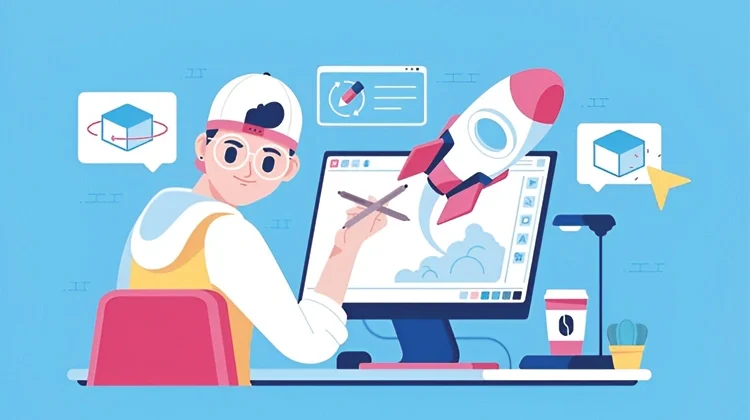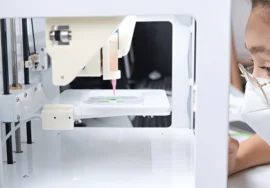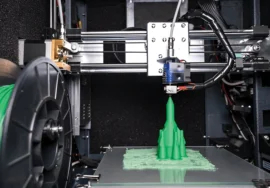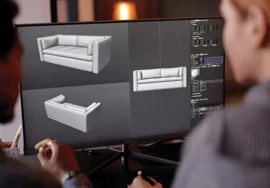
The Role of the 3D Designer: Bringing Digital Creations to Life
In today’s increasingly digital world, the role of the 3D designer has become indispensable across various industries. From video games and movies to architecture and product design, 3D designers play a crucial role in bringing imaginative concepts to life. This article delves into the multifaceted world of 3D design, exploring the responsibilities, skills, and impact of these creative professionals.
What is a 3D Designer?
A 3D designer is a skilled individual who utilizes specialized software to create three-dimensional models, animations, and visual effects. They have a keen eye for detail and a deep understanding of design principles, enabling them to craft realistic and visually stunning digital representations.
Key Responsibilities of a 3D Designer
The responsibilities of a 3D designer can vary depending on the specific industry and project requirements. But, the common tasks include:
- Modeling: Creating three-dimensional objects and environments using various modeling techniques, such as polygon modeling, NURBS modeling, and 3D scanning.
- Texturing: Applying textures and materials to 3D models to give them a realistic appearance and visual appeal.
- Lighting: Setting up lighting conditions to enhance the mood and atmosphere of a scene, ensuring proper illumination and shadows.
- Rendering: Generating high-quality images and animations from 3D models, applying advanced rendering techniques to achieve photorealistic results.
- Animation: Bringing 3D models to life through animation, creating dynamic and engaging visual sequences.
- Collaboration: Working closely with other team members, such as art directors, game designers, and architects, to ensure seamless integration of 3D assets into larger projects.
Essential Skills for a 3D Designer
To excel in 3D design, a firm foundation in the following skills is essential:
- Technical skill: Mastery of 3D modeling and animation software, such as Autodesk 3ds Max, Maya, Blender, Cinema 4D, and Adobe Creative Suite.
- Artistic Ability: A keen eye for composition, color theory, and visual storytelling, enabling the creation of visually appealing and impactful designs.
- Problem-solving skills: The ability to troubleshoot technical issues and find creative solutions to challenges that may arise during the design process.
- Attention to Detail: Meticulous attention to detail is crucial for ensuring the accuracy and quality of 3D models and animations.
- Creativity and Innovation: A powerful imagination and the ability to think outside the box to generate unique and innovative design concepts.
The Impact of 3D Design
3D design has revolutionized various industries, enabling breakthroughs in product design, architecture, entertainment, and more. The key impacts of 3D design include:
- Product Design: 3D designers play a vital role in the product development process, creating detailed 3D models that help visualize and refine designs before physical prototypes are created. This enables faster and more cost-effective product development cycles.
- Architecture: 3D design has transformed the way architects present their ideas to clients. By creating realistic 3D visualizations of architectural designs, architects can give a clearer understanding of the proposed building’s form, act, and aesthetics. This facilitates better communication and decision-making during the design process.
- Entertainment: 3D design is the backbone of the entertainment industry, powering the creation of visually stunning video games, movies, and television shows. 3D designers bring fictional worlds to life, creating immersive experiences that captivate audiences.
- Education and Training: 3D design tools are increasingly used in education and training to create interactive and engaging learning experiences. 3D models and simulations can be used to teach complex concepts in a more intuitive and visually appealing way.
- Medical Science: 3D design plays a crucial role in medical research and healthcare. 3D models of human organs and tissues can be used to study diseases, develop new treatments, and plan surgical procedures.
The Future of 3D Design
As technology continues to advance, the role of the 3D designer is poised for further evolution. Emerging trends such as virtual and augmented reality, artificial intelligence, and machine learning are opening up new possibilities for 3D design. 3D designers will need to adapt to these technological advancements and acquire new skills to remain relevant in the industry.
Conclusion
The role of the 3D designer is multifaceted and essential in today’s digital landscape. By combining technical expertise, artistic flair, and problem-solving skills, 3D designers bring imaginative concepts to life, shaping the way we interact with the digital world. As technology continues to evolve, the demand for skilled 3D designers is likely to grow, making it an exciting and rewarding career path for creative individuals.





